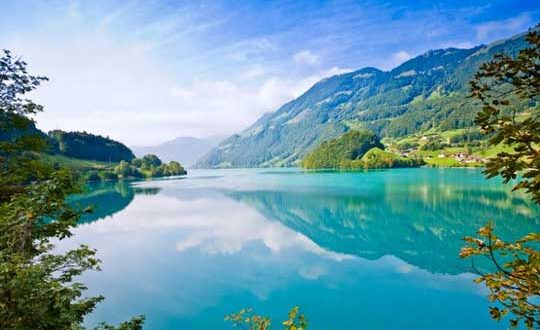Atmospheric oxygen levels have declined over the past one million years, although not nearly enough to trigger any major problems for life on Earth, a new research finds.
The research shows global O2 levels dropped by about 0.7 per cent, over the course of 800,000 years. Writing in Science, the researchers say over that period, oxygen sinks — factors that consume oxygen — were about two per cent larger than oxygen producers.
“We did this analysis more out of interest than any expectation,” Princeton University geologist Daniel Stolper told Gizmodo. “We didn’t know whether oxygen would be going up, down, or flat. It turns out there is a very clear trend.”
Although a drop in atmospheric oxygen levels might sound alarming, the decrease the researchers found “is trivial in regard to ecosystems,” Stolper told Live Science. “To put it in perspective, the pressure in the atmosphere declines with elevation. A 0.7 percent decline in the atmospheric pressure of oxygen occurs at about 100 meters (330 feet) above sea level — that is, about the 30th floor of a tall building.”
There are two hypotheses that may help explain this oxygen decline over the past million years, Stolper said.
“The first is that global erosion rates may have increased over the past few to tens of millions of years due to, among other things, the growth of glaciers — glaciers grind rock, thereby increasing erosion rates,” Stolper said.
Rising erosion rates would have exposed more pyrite and organic carbon to the atmosphere. Pyrite is better known as fool’s gold, and organic carbon consists of the remains of organisms, mostly land plants and aquatic photosynthetic microorganisms such as algae. Previous research found that both pyrite and organic carbon can react with oxygen and remove it from the atmosphere. [Infographic: Earth’s Atmosphere Top to Bottom]
“Alternatively, when the ocean cools, as it has done over the past 15 million years, before fossil fuel burning, the solubility of oxygen in the ocean increases. That is, the oceans can store more oxygen at colder temperatures for a given concentration of oxygen in the atmosphere,” Stolper said. Oxygen-dependent microbes in the ocean and in sediments can then become more active and consume this oxygen, leaving less of the element in the atmosphere, he added.
Future study can identify what geological processes are consistent with these findings “and thus help to identify the major processes that control atmospheric oxygen levels,” Stolper said.
These findings also reveal what might be a strange contradiction, because it could be assumed that atmospheric carbon dioxide levels should rise as oxygen levels fall — “for example, right now we are consuming oxygen and breathing out carbon dioxide,” said study senior author John Higgins, a geochemistat Princeton.
However, previous research has found that atmospheric carbon dioxide levels have not, on average, changed over the past 800,000 years, Higgins noted. “At first glance, these two sets of observations, both from gases trapped in ice cores, are paradoxical,” he said.
One way out of this conundrum is a well-known but relatively untested concept that suggests “that on timescales longer than a few hundred thousand years, atmospheric carbon dioxide and Earth’s temperature are regulated via a ‘silicate weathering thermostat,'” Higgins said.
The new study is published in the journal Science.
Agencies/Canadajournal
 Canada Journal – News of the World Articles and videos to bring you the biggest Canadian news stories from across the country every day
Canada Journal – News of the World Articles and videos to bring you the biggest Canadian news stories from across the country every day



